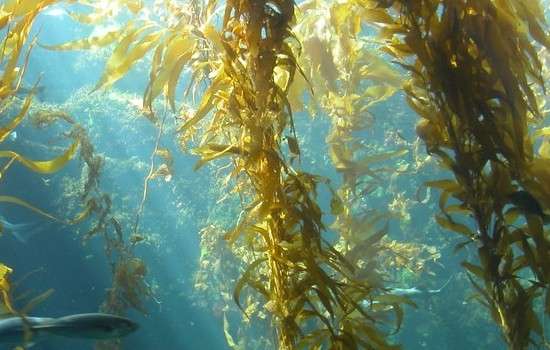

|
The importance of eating seaweed in an age of thyroid problems and radioactive Iodine.
In spite of the availability of iodized salt,
and traces of iodine present in the food (from the use of disinfectants
and cleaning agents in the food industry), people are still showing
iodine deficiency. Apparently this is the result of both dietary
peculiarities and the chronic use of fluoridated, chlorinated, and
bromated water supplies, internally and externally. Fluorine, chlorine,
and bromine are all more chemically reactive than iodine; when in the
body, they all tend to disrupt stable iodine molecules, displacing the
iodine and causing its excretion. |

|
Thyroid Disorders and Radioactive Iodine Iodine deficiency is one problem, thyroid
disorders need even more attention. Apparently, thyroid disorders have
become common. I read that one in ten adult American women (women have a
larger thyroid than men) have been diagnosed with thyroid disorders, and
about one in four have clinically detectable thyroid dysfunction. What
is thought to be the culprit is radioactive Iodine. Let us first have a
look what radioactive iodine is. The following is taken from the U.S.
Environmental Protection Agency: "Both iodine-129 and iodine-131 are
produced by the fission of uranium atoms during operation of nuclear
reactors and by plutonium (or uranium) in the detonation of nuclear
weapons. In nuclear reactors, Iodine-129 and iodine-131 are gaseous
fission products that form within fuel rods as they fission. Unless
reactor chemistry is carefully controlled, they can build up too fast,
increasing pressure and causing corrosion in the rods. As the rods age,
cracks or wholes may breach the rods. Cracked rods can release
radioactive iodine into the water that surrounds and cools the fuel
rods. There, it circulates with the cooling water throughout the system,
ending up in the airborne, liquid, and solid wastes from the reactor.
From time to time, reactor gas capture systems release gases, including
iodine, to the environment under applicable regulations. Radioactive
iodine can disperse rapidly in air and water, under the right
conditions. However, it combines easily with organic materials in soil.
This is known as ‘organic fixation' and slows iodine's movement in the
environment. Some soil minerals also attach to, or adsorb, iodine, which
also slows its movement. The long half-life of iodine-129, 15.7 million
years, means that it remains in the environment. However, iodine-131's
short half-life of 8 days means that it will decay away completely in
the environment in a matter of months. Both decay with the emission of a
beta particle, accompanied by weak gamma radiation. Radioactive iodine
can be inhaled as a gas or ingested in food or water. It dissolves in
water so it moves easily from the atmosphere into humans and other
living organisms. People are exposed to I-129 from the past testing of
nuclear weapons, and I-131 from nuclear power plant emissions. Some
industrial facilities also emit radioactive iodine to the environment,
as well as medical institutions. Radioactive iodine is usually emitted
as a gas, but may contaminate liquids or solid materials as well.
Radioactive iodine can enter the body by ingestion or inhalation. It
dissolves in water so it moves easily from the atmosphere into humans
and other living organisms. For example, I-129 and -131 can settle on
grass where cows can eat it and pass it to humans through their milk. It
may settle on leafy vegetables and be ingested by humans. Iodine
isotopes also concentrate in marine and freshwater fish, which people
may then eat. When I-129 or I-131 is ingested, some of it concentrates
in the thyroid gland. The rest passes from the body in urine. Breast Cancer and Iodine The Thyroid is not the only place in the body
that is rich in Iodine. Iodine is readily incorporated into the tissues
surrounding the mammary nipples and is essential for the maintenance of
healthy functioning breast tissue. Iodine is also present in the gonads
and salivary tissues. Maybe the rise in cancer in these tissues is
related to the destructive action of radioactive Iodine 131 present in
our environment. Healthy Seaweed Source There are four major categories of seaweed based
on the pigmentation used by the seaweed to aid the photosynthesis
process. Seaweed is naturally low in calories but high in minerals. It
is a major source of vitamin B12. It is a reliable source of potassium,
calcium, magnesium and trace minerals. It is important to get healthy
seaweed, as nowadays so many coastal waters are polluted. |